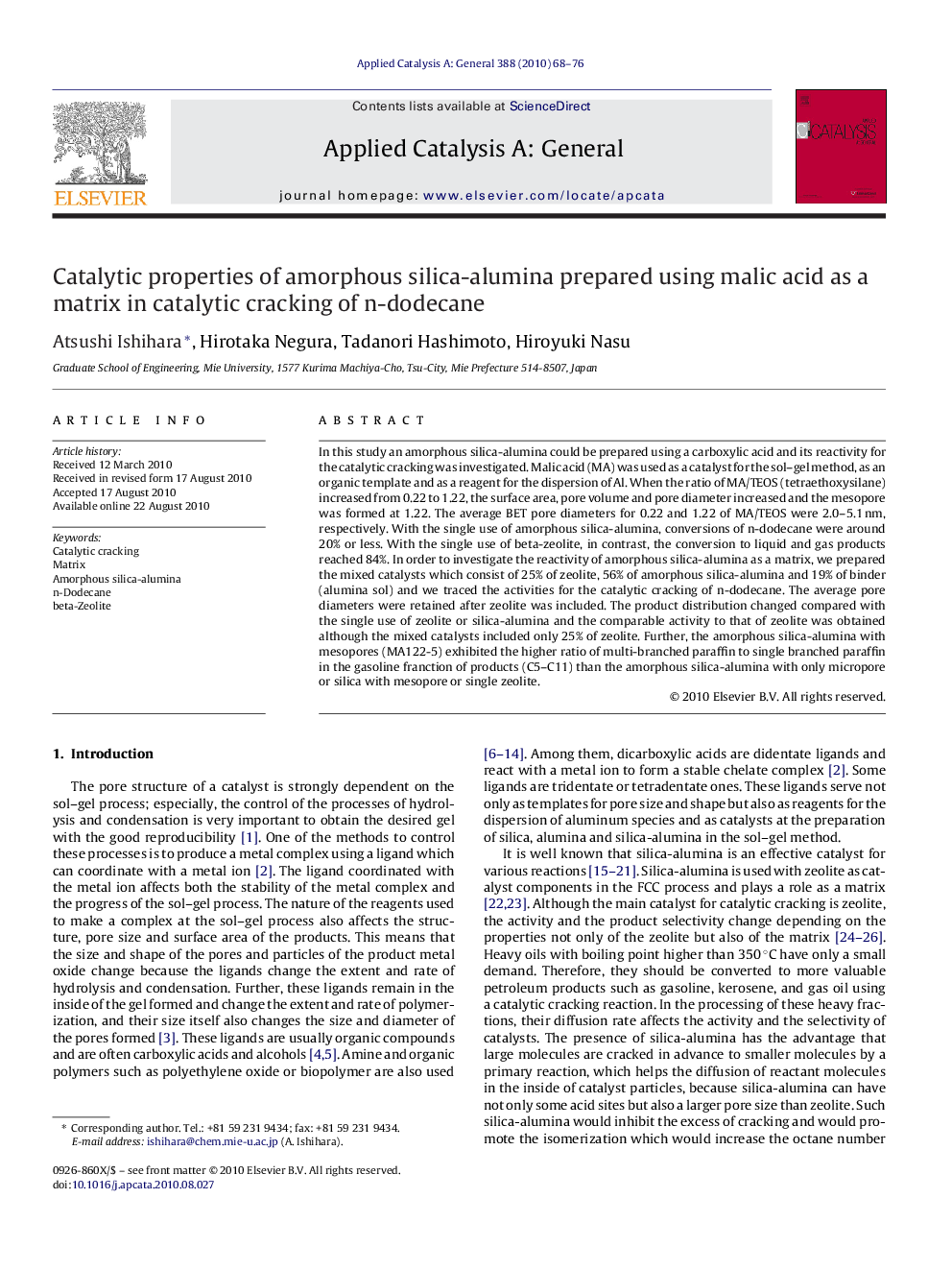| کد مقاله | کد نشریه | سال انتشار | مقاله انگلیسی | نسخه تمام متن |
|---|---|---|---|---|
| 41819 | 45901 | 2010 | 9 صفحه PDF | دانلود رایگان |

In this study an amorphous silica-alumina could be prepared using a carboxylic acid and its reactivity for the catalytic cracking was investigated. Malic acid (MA) was used as a catalyst for the sol–gel method, as an organic template and as a reagent for the dispersion of Al. When the ratio of MA/TEOS (tetraethoxysilane) increased from 0.22 to 1.22, the surface area, pore volume and pore diameter increased and the mesopore was formed at 1.22. The average BET pore diameters for 0.22 and 1.22 of MA/TEOS were 2.0–5.1 nm, respectively. With the single use of amorphous silica-alumina, conversions of n-dodecane were around 20% or less. With the single use of beta-zeolite, in contrast, the conversion to liquid and gas products reached 84%. In order to investigate the reactivity of amorphous silica-alumina as a matrix, we prepared the mixed catalysts which consist of 25% of zeolite, 56% of amorphous silica-alumina and 19% of binder (alumina sol) and we traced the activities for the catalytic cracking of n-dodecane. The average pore diameters were retained after zeolite was included. The product distribution changed compared with the single use of zeolite or silica-alumina and the comparable activity to that of zeolite was obtained although the mixed catalysts included only 25% of zeolite. Further, the amorphous silica-alumina with mesopores (MA122-5) exhibited the higher ratio of multi-branched paraffin to single branched paraffin in the gasoline franction of products (C5–C11) than the amorphous silica-alumina with only micropore or silica with mesopore or single zeolite.
Figure optionsDownload high-quality image (124 K)Download as PowerPoint slideResearch highlights▶ Amorphous silica-aluminas (SA) with mesopore were prepared with malic acid. ▶ Mixed catalysts of SA with beta-zeolite showed high activity in catalytic cracking. ▶ The mixed catalysts with mesopore formed larger amounts of multi-branched products. ▶ Larger pores and moderate acidity of catalysts played an important role in catalysis. ▶ Primary cracking of n-dodecane occurred on silica-alumina rather than on zeolite.
Journal: Applied Catalysis A: General - Volume 388, Issues 1–2, 20 November 2010, Pages 68–76